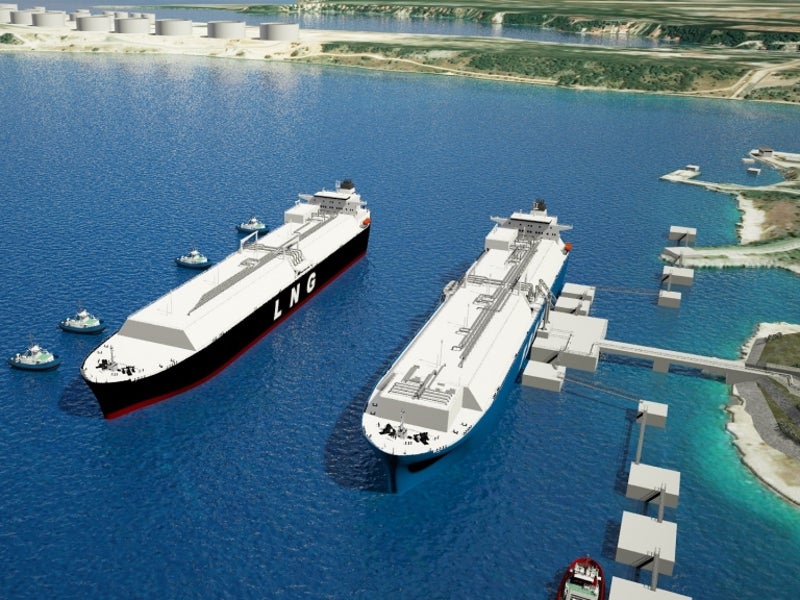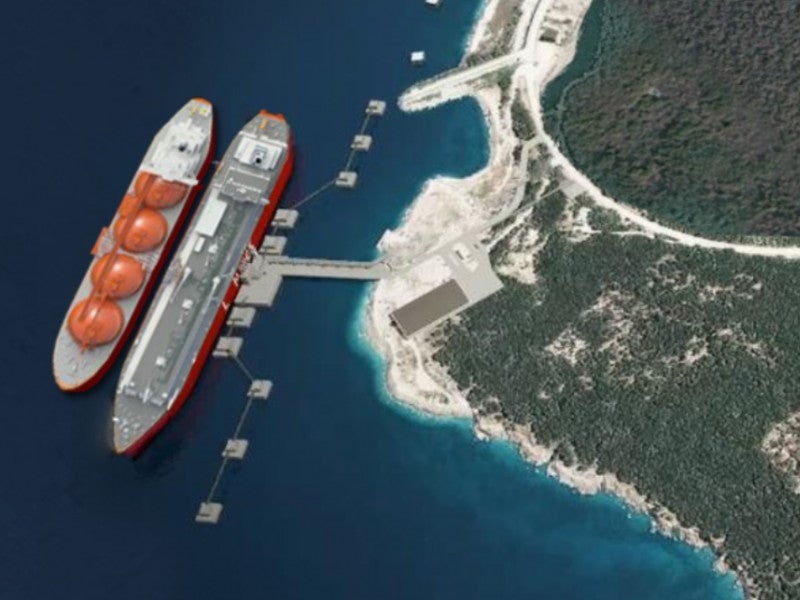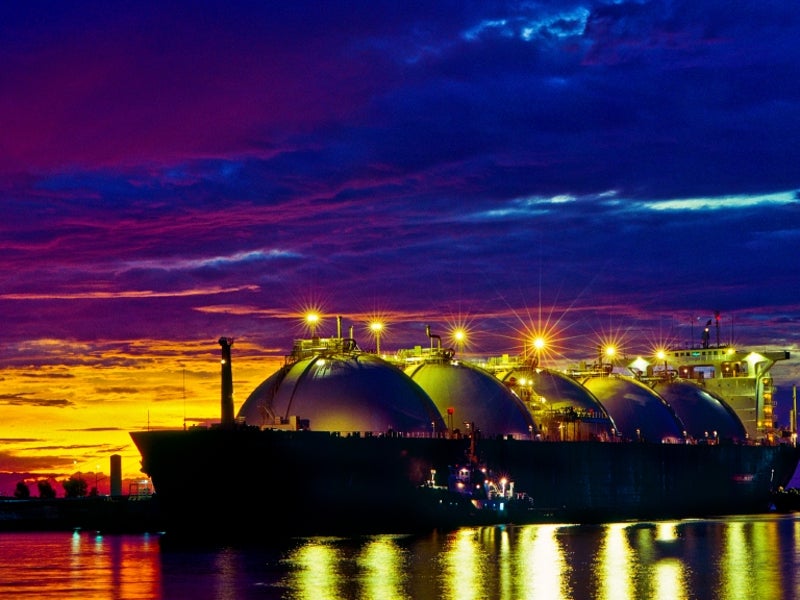The Krk LNG terminal is a 2.6 billion cubic metres per year (bcm/y) floating LNG regasification and import terminal project under construction at the Krk Island located in northern Adriatic Sea, Croatia.
LNG Croatia, a joint venture of two Croatian state-owned companies, is the developer and operator of the Krk LNG import terminal.
Hrvatska Elektroprivreda, the state-owned gas and electricity utility, holds 85% interest in LNG Croatia, while the remaining 15% is held by Croatia’s gas transmission system operator Plinacro.
The final investment decision (FID) on the £213.4m (€233.6m) project was reached in January 2019, while construction works were started in April 2019.
Scheduled to enter service in 2021, the Krk LNG terminal will supply gas to the Croatian national transmission network, which is connected with the European Union (EU) countries including Slovenia, Italy, and Hungary.
The LNG import terminal will also be capable of delivering gas to other EU countries via non-EU countries such as Serbia and Montenegro.
Krk LNG terminal project background and development details
The Krk LNG terminal project was recognised as a Project of Common Interest (PCI) by the EU in 2013.
The environmental impact assessment (EIA) for the project was completed in April 2018, while the Croatian Ministry of Sea, Transport, and Infrastructure concluded the maritime concession agreement for the project in October 2018.
Construction works on the project were started after receiving necessary approvals from the concerned authorities in April 2019.
The European Commission (EC) approved financial support for the Krk LNG import terminal project in July 2019.
Krk LNG terminal infrastructure details
The Krk LNG terminal project involves a floating storage and regasification unit (FSRU), a jetty, onshore auxiliary facilities and buildings, a pigging station, and water and drainage facilities, along with a high-pressure gas pipeline to connect the terminal with the Croatian National gas transmission network.
Preliminary site preparation works involving removal of the existing jetty B dolphins and equipment, as well as the clearance of the corridor for gas pipeline and water line system were started at the Krk Island site in April 2019, while concrete works for the jetty were started in June 2019.
The FSRU is scheduled to arrive at the site by the end of 2019.
Krk LNG FSRU details
The FSRU for the Krk LNG import project will be based on the conversion of an existing LNG tanker named Golar Viking, which was built in 2005. Seawater heat will be used for the regasification of LNG on the FSRU.
The Krk FSRU will be capable of regasifying 300,000m³ of natural gas an hour and will have a storage capacity for 140,000m³ of natural gas.
The annual gas processing capacity of the FSRU will be 2.6 billion cubic metres (bcm).
Financing
The European Commission (EC) provides £93m (€101.4m) for the project from the EU’s Connecting Europe Facility (CEF) fund for pan-European infrastructure investment through the Innovation and Networks Executive Agency (INEA).
The Croatian State contributes £91m (€100m) from its budget, while the remaining £29m (€32.2m) will be provided as direct equity investment by both the shareholders of LNG Croatia.
Contractors involved
A consortium of Pomgrad Inženjering, Stsi-Integrirani Tehnički Servi, and Gp Krk was awarded the engineering, procurement, and construction (EPC) contract worth £51.7m (€58.5m) for the Krk LNG Terminal project in January 2019.
Golar LNG received the £141.3m (€159.6m) FSRU conversion contract for the project in the same month.
Belgian engineering firm Tractebel completed the front-end engineering and design (FEED) for the floating Krk LNG terminal project in November 2017.





